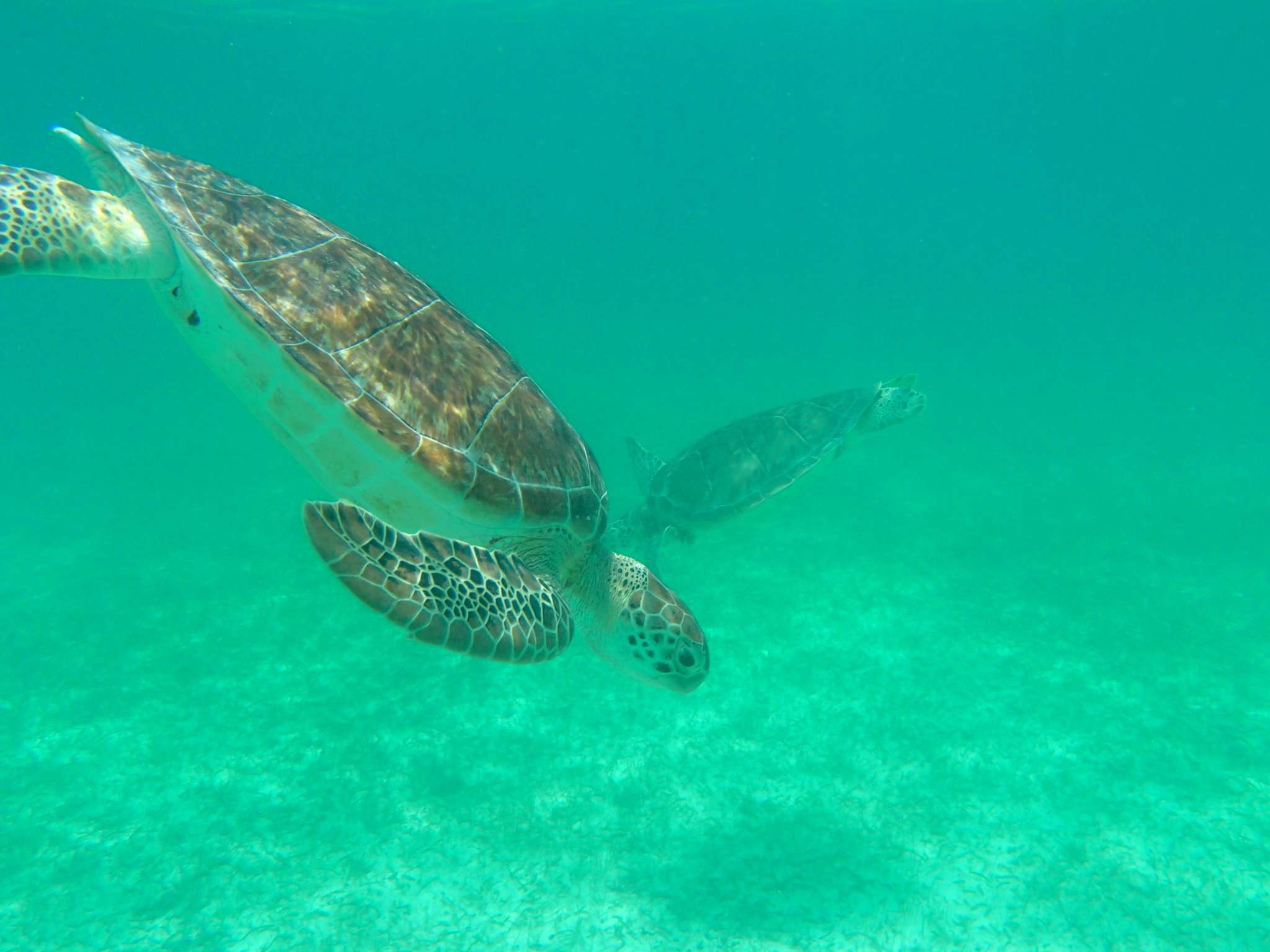

Written By Thien-Kym Nguyen-Phuoc
Photos courtesy of Laura Mack & Kathy Slater
There are seven extant species of sea turtle in the world. The seven species are divided into two families. The leatherback sea turtle is the only species alive that is in the Dermochelyidae family and the other six species: hawksbill sea turtle, loggerhead sea turtle, green sea turtle, Olive Ridley sea turtle, flatback sea turtle, and Kemp’s Ridley sea turtle, are in the Cheloniidae family. In the Cheloniidae family, the Kemp’s Ridley sea turtle and flatback sea turtle are localized to the Gulf of Mexico and Australia, respectively, while the other four species and the leatherback sea turtle are widespread.
Chelonia mydas or the green sea turtle is a widespread species that can be found in both the Indo-Pacific and Atlantic Oceans. They are the largest sea turtles in the Cheloniidae family. At sexual maturity, green sea turtles can migrate great distances, such as a documented 2300 km, between their feeding and breeding grounds. However, as juveniles, green sea turtles spend most of their time on and around their feeding grounds.
Opwall’s marine site in Mexico is one such feeding ground. Akumal Bay contains three species of sea grasses: Thalassia testudinum, Syringodium filiforme, and Halodule wrightii. The former two sea grasses attracts juvenile green sea turtles to the bay as a food source. As documented, so far, by Opwall’s dissertation students, there is a resident population of at least 60 juvenile green sea turtles that feed on the bay’s sea grasses.

Akumal and Akumal Bay are different from many of Opwall’s other field sites, because the small town is a tourist destination where Opwall’s students get a lot of interaction with the general public and the effects they have on the surrounding environment, whether it is direct or indirect. Akumal’s economy is largely dependent on its ecotourism, which means that Akumal makes it money through indirect exploitation of its resources, in the case the feeding juvenile green sea turtles. Locals take advantage of the juvenile green sea turtle population by selling guided turtle watching snorkel tours and basing their businesses around the charismatic species.
The snorkel tours are of great interest because more locals have been turning to this business venture and the bay is being flooded with more and more tourists with each passing year. As an example of how the snorkel tourism industry in Akumal is growing, two years ago, 2013, the maximum number of tourists that could be found around a five-meter radius around an individual green sea turtle was 21, and this year that record has been broken several times with the highest recording reaching an astonishing and seemingly impossible 57. Although both of these numbers were data set outliers, they still provide a good demonstration of the tourism growth. The snorkel industry is one of the reasons that Opwall is operating in Akumal and it is central to one of the dissertation projects in Akumal.
Social Media Links